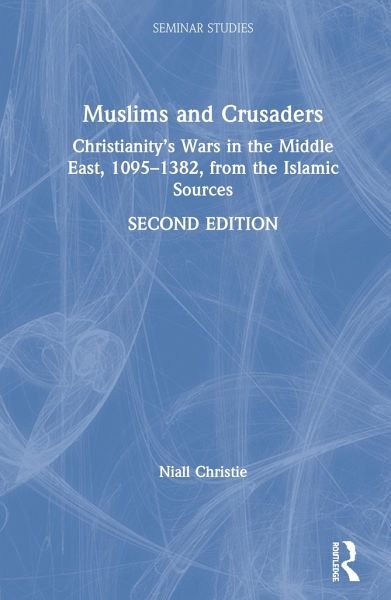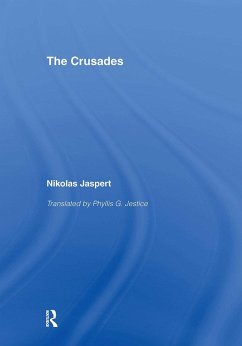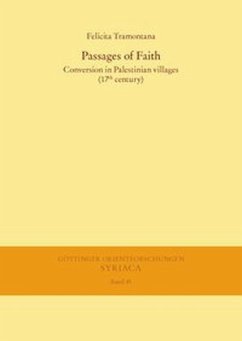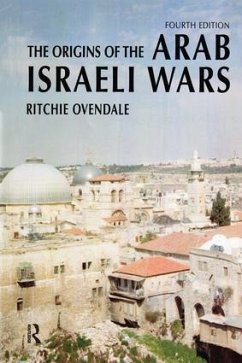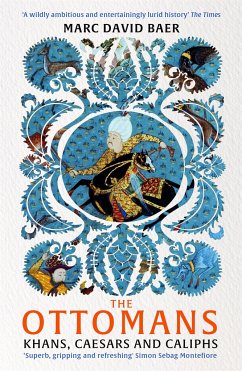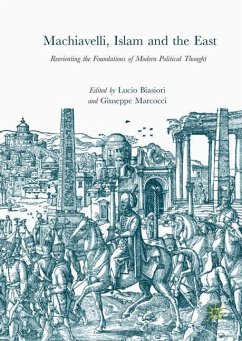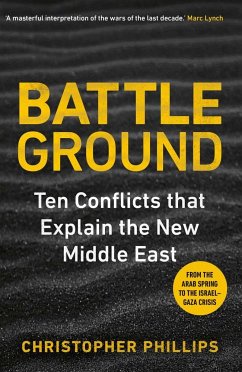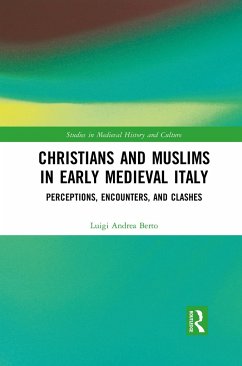Niall Christie
Gebundenes Buch
Muslims and Crusaders
Christianity's Wars in the Middle East, 1095-1382, from the Islamic Sources
Versandkostenfrei!
Versandfertig in 1-2 Wochen
Weitere Ausgaben:

PAYBACK Punkte
84 °P sammeln!





Muslims and Crusaders combines chronological narrative, discussion of important areas of scholarly enquiry and evidence from Islamic primary sources to give a well-rounded survey of Christianity's wars in the Middle East, 1095-1382. This revised and updated second edition is ideal for students and historians of the crusades.
Niall Christie in an instructor in history at Langara College in Vancouver, Canada, where he teaches the history of Europe and the Muslim world. He is also an adjunct professor of medieval studies at the University of Victoria. His research focuses on the Muslim response to the crusades. He is the author of numerous articles and The Book of the Jihad of 'Ali ibn Tahir al-Sulami (d. 1106): Text, Translation and Commentary (2015).
Produktdetails
- Verlag: Routledge
- 2. Auflage
- Seitenzahl: 310
- Erscheinungstermin: 21. April 2020
- Englisch
- Abmessung: 240mm x 161mm x 21mm
- Gewicht: 631g
- ISBN-13: 9781138543102
- ISBN-10: 1138543101
- Artikelnr.: 69948106
Herstellerkennzeichnung
Libri GmbH
Europaallee 1
36244 Bad Hersfeld
gpsr@libri.de
"Although the primary audience for this revised edition (originally published in 2014) is still the general reader and undergraduate student, it is equally attractive to historians, especially medievalists whose expertise is not in the medieval Levant. The work has a tripartite organization, and each section mutually supports the others. Extensive prefatory material includes a guide to understanding Muslim names, a chronology, a "Who's who" section, maps, and a glossary-all extremely useful when tackling the narrative portion, which immediately follows. Spanning 10 chapters, this central section observes an overall chronological structure that starts with a presentation of core Muslim beliefs and a basic history of the Levant in the
Mehr anzeigen
pre-crusading period, continues with the centuries of contact (military and non-military) between crusaders and their opponents, and ends with a wonderful chapter on the place of the crusades within medieval and modern thought. The last section presents selected documents translated from Arabic whose numbering is keyed into the preceding account. What makes this book outstanding is the scholarship, clear prose, and scrupulous honesty in the construction of a narrative that illuminates the major historiographical controversies while providing a context for understanding the documents". R. T. Ingoglia, St.Thomas Aquinas College Summing Up: Highly recommended. All levels.
"The topic of the Muslim responses to the Crusades is a dense and complex field. Niall Christie's textbook, now in its expanded second edition, simplifies the subject and presents it in an engaging, succinct, but also thorough manner. I highly recommend this textbook for all university courses on the field of the Islamic World and the Crusades." Fadi Ragheb, Assistant Professor, Near and Middle Eastern Civilizations, University of Toronto, Canada.
"In the twenty-first century, it is increasingly imperative that we teach the history of the crusades comparatively and critically, with attention to historical methods, contexts, and contingencies. Dr. Christie's groundbreaking textbook empowers instructors and students to do this, even if they are encountering Islamic history for the first time. Christie introduces key terms and concepts, rigorously contextualizes his sources, and thoughtfully considers historiographical debates. He accomplishes this concisely and in clear, student-friendly prose, while also providing a full range of teaching aids, including sometimes otherwise unavailable primary sources in translation. This book is absolutely essential for anyone teaching the history of the crusades." Susanna A. Throop, Associate Professor, Ursinus College, USA
"The topic of the Muslim responses to the Crusades is a dense and complex field. Niall Christie's textbook, now in its expanded second edition, simplifies the subject and presents it in an engaging, succinct, but also thorough manner. I highly recommend this textbook for all university courses on the field of the Islamic World and the Crusades." Fadi Ragheb, Assistant Professor, Near and Middle Eastern Civilizations, University of Toronto, Canada.
"In the twenty-first century, it is increasingly imperative that we teach the history of the crusades comparatively and critically, with attention to historical methods, contexts, and contingencies. Dr. Christie's groundbreaking textbook empowers instructors and students to do this, even if they are encountering Islamic history for the first time. Christie introduces key terms and concepts, rigorously contextualizes his sources, and thoughtfully considers historiographical debates. He accomplishes this concisely and in clear, student-friendly prose, while also providing a full range of teaching aids, including sometimes otherwise unavailable primary sources in translation. This book is absolutely essential for anyone teaching the history of the crusades." Susanna A. Throop, Associate Professor, Ursinus College, USA
Schließen
Für dieses Produkt wurde noch keine Bewertung abgegeben. Wir würden uns sehr freuen, wenn du die erste Bewertung schreibst!
Eine Bewertung schreiben
Eine Bewertung schreiben
Andere Kunden interessierten sich für




